San Diego
Please note as seen with today’s two featured images that San Diego ain’t just pelicans. Do consider joining one of the upcoming San Diego Instructional Photo-Tours. You can find the details below.
Your Call?
Which of today’s two featured images do you like best? Why? I have a clear favorite that I will share with you here on Thursday.
Kosher or Not Kosher?
For me, replacing the head of the adult in the image with the best look at the begging chick was and is 100% kosher. The natural history of the scene was preserved and the optimized image was much prettier than either of the original captures. Thanks to Cliff Beittel for this in his comment: … but in this case it’s the adult’s startling blue eye that really makes the image for me. Regular readers know that I always let folks know what I have done to improve an image and that when and if I enter a contest, I always abide by the rules.
What’s Up?
I have made the big decision for my upcoming Iceland trip — I will be taking both the Sony 600mm f/4 GM and the Sony 400mm f/2.8 GM. The two big prime lenses fit into my big Think Tank bag with room to spare. The 400 f/2.8 will be perfect for low light puffins and other seabirds in flight. And I will need the reach of the 600 (plus TCs) for the nesting loons and hopefully for a gorgeous male Black-tailed Godwit.
I also will be taking the 12-24 f/2.8 GM wide angle zoom lens (that I use only rarely) and the 70-200mm f/2.8 II GM. The 200-600 G will be left at home on a shelf in the garage. Today I will do some experimental packing of the TCs and other accessories; some of that stuff will need to go into a checked bag. I will be bringing three a1 bodies.
Today is Tuesday 4 July 2023. Happy birthday to the USA. Wherever you are and whatever you are doing, I hope that you too have a great day.
Please remember to use the B&H and Amazon links that are found on most blog pages and to use the BIRDSASART discount code at checkout when purchasing your new gear from Bedfords to get 3% back on your credit card and enjoy free second-day air FedEx. Please, also, consider joining a BAA IPT. You will be amazed at how much you will learn!
You can find some great photo accessories (and necessities, like surf booties!) on Amazon by clicking on the Stuff tab on the orange/yellow menu bar above. On a related note, it would be extremely helpful if blog-folks who, like me, spend too much money on Amazon, would get in the habit of clicking on the Amazon logo link on the right side of each blog post when they shop online. As you might expect, doing so will not cost you a single penny, but would be appreciated tremendously by yours truly. And doing so works seamlessly with your Amazon Prime account.
If an item — a Delkin flash card, or a tripod head — for example, that is available from B&H and/or Bedfords, is also available in the BAA Online Store, it would be great, and greatly appreciated, if you would opt to purchase from us. We will match any price. Please remember also to use my B&H affiliate links or to earn 3% cash back at Bedfords by using the BIRDSASART discount code at checkout for your major gear purchases. Doing either often earns you free guides and/or discounts. And always earns my great appreciation.
|
|
|
This image was created on 21 January 2023 at Santee Lakes, San Diego, CA. Seated on the grass, I used the handheld Sony FE 200-600mm f/5.6-6.3 G OSS lens (at 437mm) and The One, the Sony Alpha 1 Mirrorless digital camera. ) The exposure was determined using Zebra technology with ISO on the Thumb Dial. ISO 1250. 1/4000 second at f/6.3 (wide-open) in Manual Mode. AWB at 3:40:13pm on a sunny afternoon. RawDigger showed the exposure to be dead-solid perfect plus a bit. Tracking: Spot S AF-C with Bird Face/Eye Detection performed perfectly. Be sure to click on the image to enjoy a high-res version. Image #1: Wood Duck drake — displaying or aggressive or curious?
|
What Was Going On?
I am not sure if the drake Wood Duck in the sun was showing off for a nearby lady, driving away another duck that came to the scratch, or was simply curious about what was going on.
Please do not ask me why I was at such a high ISO with such a high shutter speed. I have no clue, but this might be the explanation: with Sony, there are times that I pay so much attention to getting a few Zebras that I can lose track of both of those parameters. In any case, 1/1000 second would have been more than enough for a swimming duck.
|
|
|
This image was created on 21 January 2023 at Santee Lakes, San Diego, CA. Seated on the grass, this time I went with the handheld Sony FE 400mm f/2.8 GM OSS lens and The One, the Sony Alpha 1 Mirrorless Digital Camera). The exposure was determined via Zebra technology with ISO on the Thumb Dial. ISO 1/1250. 1/500 sec. at f/2,8 (wide open) in Manual mode. When evaluated in RawDigger, the raw file brightness was determined to be dead-solid perfect plus a bit. AWB at 4:51:17pm after the sun dropped behind the hills to the west. Tracking: Spot S AF-C with Bird Face/Eye detection enabled performed to perfection. Be sure to click on the image to enjoy a high-res version. Image #2: Wood Duck drake in the shade in swirly green water |
The Purple Cheek Patch
Drake Wood Ducks have a sort of oval-shaped purple cheek patch. The very best images will show this patch as purple. If the head angle is off a bit or the light does not strike the face properly, the purple patch will be rendered as black; no amount of post processing can restore the purple tones.
Why Expose Far to the Right with Drake Wood Ducks?
With both of today’s featured images, I intentionally exposed so far to the right that RawDigger showed 20148 OvExp pixels in Image #1 and 1175 OvExp pixels in Image #2. Why did I push the exposure so far to the right?
The OvExp pixels in each image were all in the GREEN channel. Therefore, as you learn in the RawDigger Guide, the detail in the WHITEs was easily restored during the raw conversion in Photoshop. In Image #1, the 20,000+ OvExp pixels out of 51 million were no big deal.
Sun or None for Wood Ducks?
From where I sit, it is much easier to make a good drake Wood Duck image in the shade or on a cloudy day than it is on a sunny day. Here’s why:
1- The contrast is much lower. With the sun shining, there are many more stops difference in the bright whites of the neck and the top of the bill as compared to the tones of the dark feathers. That makes getting the exposure perfect extremely difficult.
2- You do not have to worry about shadows in low light. With the sun coming from the far left in Image #1, many of the dark feathers on the duck’s back are in the shade. That exacerbated the contrast problems as you have dark feathers in the shade and sunlit white feathers.
Your Call?
Which of today’s two featured images do you like best? Why? I have a clear favorite that I will share with you here on Thursday.
The 2023/2024 San Diego Brown Pelicans (and more!) IPTs
San Diego IPT #1. 3 1/2 DAYS: WED 27 DEC thru the morning session on Saturday 30 DEC 2023. $2099.00. Deposit: $699.00. Limit: photographers.
San Diego IPT #2. 4 1/2 DAYS: TUES 9 JAN thru the morning session on SAT 13 JAN 2024: $2699.00. Deposit: $699.00. Limit: 6 photographers.
San Diego IPT #3: 4 1/2 DAYS: TEUS 23 JAN thru the morning session on SAT 27 JAN 2024: $2699.00. Deposit: $699.00. Limit: 6 photographers/Openings: 5.
Please e-mail for information on personalized pre- and post-IPT morning sessions.
Join me in San Diego to photograph the spectacular breeding plumage Brown Pelicans with their fire-engine red and olive green bill pouches; Brandt’s (nesting) and Double-crested Cormorants; breeding plumage Wood and Ring-necked Ducks; other duck species possible including Lesser Scaup, Redhead, Northern Shoveler and Surf Scoter; a variety of gulls including Western, California, and the gorgeous Heermann’s, all in full breeding plumage; shorebirds including Marbled Godwit, Willet, Sanderling and Black-bellied Plover; many others are possible including Least, Western, and Spotted Sandpiper, Whimbrel, Black and Ruddy Turnstone, Semipalmated Plover, and Surfbird; Harbor Seals and California Sea Lions (both depending on the current regulations and restrictions). And as you can see by studying the IPT cards, there are some nice bird-scape and landscape opportunities as well. Not to mention a ton of excellent flight photography opportunities and instruction.
I discovered some really neat new spots on my 2022/23 visit. As a result, the first and second IPTs may include an afternoon or two of landscape photography.
Please note: where permitted and on occasion, ducks and gulls may be attracted (or re-located) with offerings of grains or healthy bread.
|
|
|
San Diego offers a wealth of very attractive natural history subjects, including and especially the Pacific race of California Brown Pelican. With annual visits spanning more than four decades, I have lots of photographic experience there … Click on the composite to enjoy a larger version. |
Learning Exposure, Whether You Like It Or Not
Whether you like it or not, we will be beating the subject of exposure like a dead horse. In every new situation, you will hear my thoughts on exposure along with my thoughts on both Nikon and Canon histograms and SONY Zebras. Whether you like it or not, you will learn to work in manual mode so that you can get the right exposure every time (as long as a bird gives you ten seconds with the light constant). Or two seconds with SONY zebras … And you will learn what to do when the light is changing constantly. What you learn about exposure will be one of the great takeaways on every IPT.
|
|
|
Though the pelicans will be the stars of the show on this IPT, there will be many other handsome and captivating subjects in wonderful settings. Click on the composite to enjoy a larger version. |
It Ain’t Just Pelicans
With gorgeous subjects just sitting there waiting to have their pictures taken, photographing the pelicans on the cliffs is about as easy as nature photography gets. With the winds from the east almost every morning, there is usually some excellent flight photography, at times with 70-200mm lenses! And the pelicans are almost always doing something interesting: preening, scratching, bill pouch cleaning, or squabbling. And then there are those crazy head throws that are thought to be a form of intra-flock communication. You will be guided as to how to make the best of those opportunities. Depending on the weather, the local conditions, and the tides, there are a variety of other fabulous photo chances available in and around San Diego. Each IPT will include one or two duck sessions.
|
Did I mention that there are lots of great birds and natural history subjects in San Diego in winter? Click on the composite to enjoy a larger version. |
The San Diego Details
These IPTs will include four or five 3-hour morning photo sessions, three or four 1 1/2-hour afternoon photo sessions, and three or four working brunches that will include image review and Photoshop sessions. On rare cloudy days, we may — at the leader’s discretion, stay out in the morning for a long session and skip that afternoon shoot. To ensure early starts, breakfasts will be your responsibility. And so that we can get some sleep, dinners will be on your own as well. In the extremely unlikely event that Goldfish Point is closed due to local ordinance (or whimsy) — that has never happened in the past fifty years, I will of course do my very best to maximize our photographic opportunities.
|
|
|
San Diego offers a wealth of very attractive natural history subjects, including and especially the Pacific race of California Brown Pelican. With annual visits spanning more than four decades, I have lots of photographic experience there … Click on the composite to enjoy a larger version. |
Deposit Info
A $699 deposit is required to hold your slot for one of the 2023/2024 San Diego IPTs. You can send a check (made out to “BIRDS AS ART”) to us here: BIRDS AS ART, PO Box 7245, Indian Lake Estates, FL, 33855, or call Jim or Jennifer at the office with a credit card at 863-692-0906. Your balance, payable only by check, is due three months before the trip.
|
Variety is surely the spice of life in San Diego. Click on the composite to enjoy a larger version. |
Getting Up Early and Staying Out Late
On all BIRDS AS ART IPTS including and especially the San Diego IPT, we get into the field early to take advantage of unique and often spectacular lighting conditions and we stay out late to maximize the chances of killer light and glorious sunset silhouette situations. We often arrive at the cliffs a full hour before anyone else shows up to check out the landscape and seascape opportunities.
Typos
With all blog posts, feel free to e-mail or to leave a comment regarding any typos or errors.

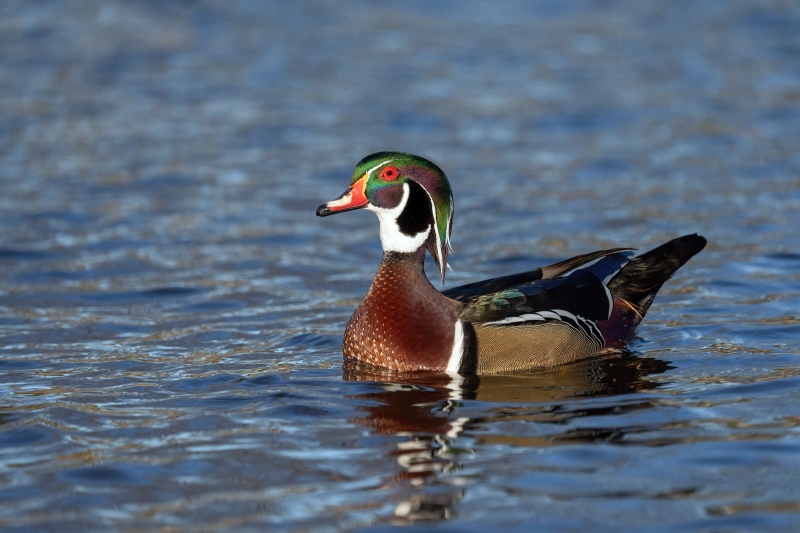
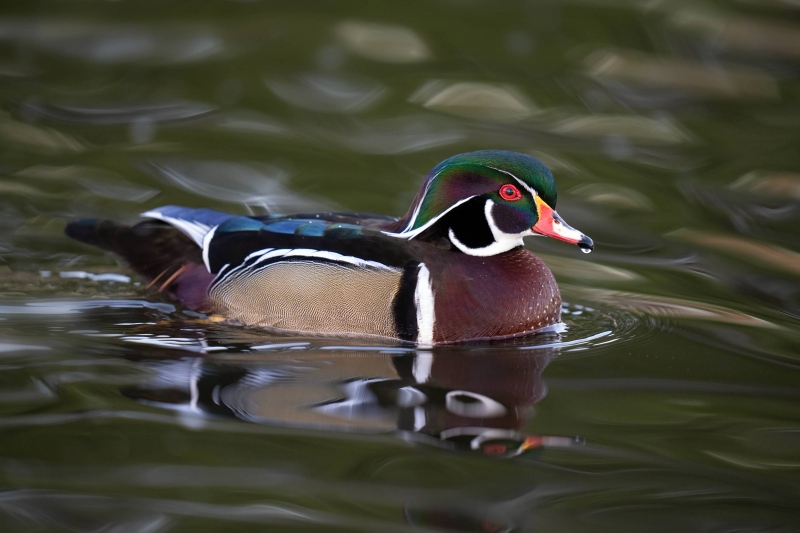
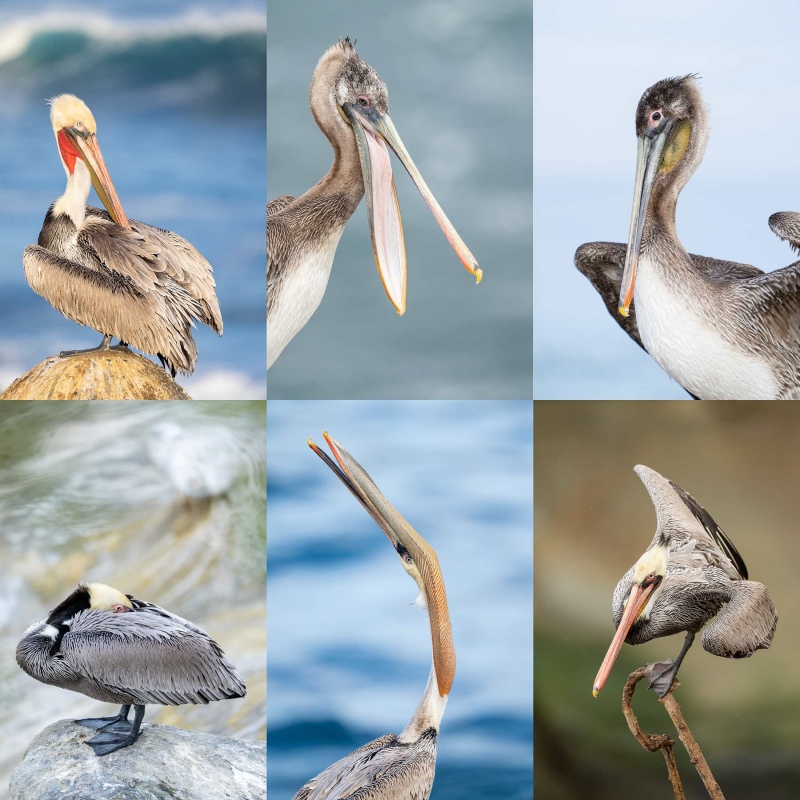
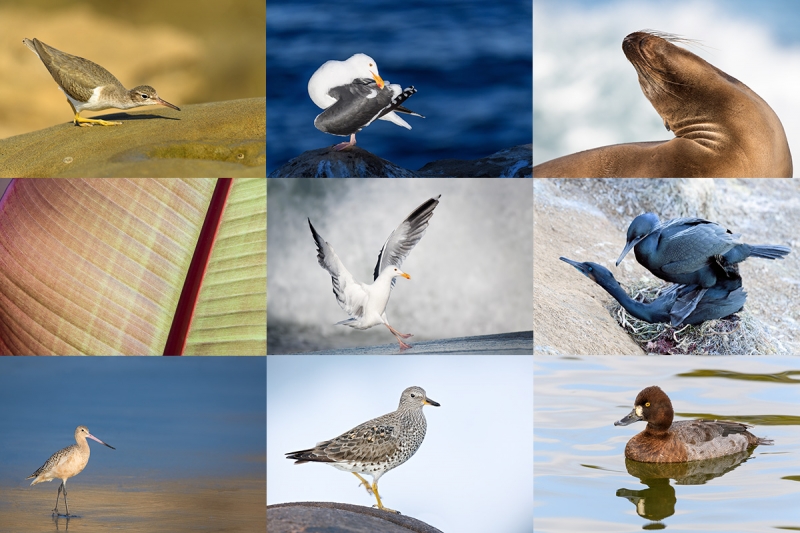

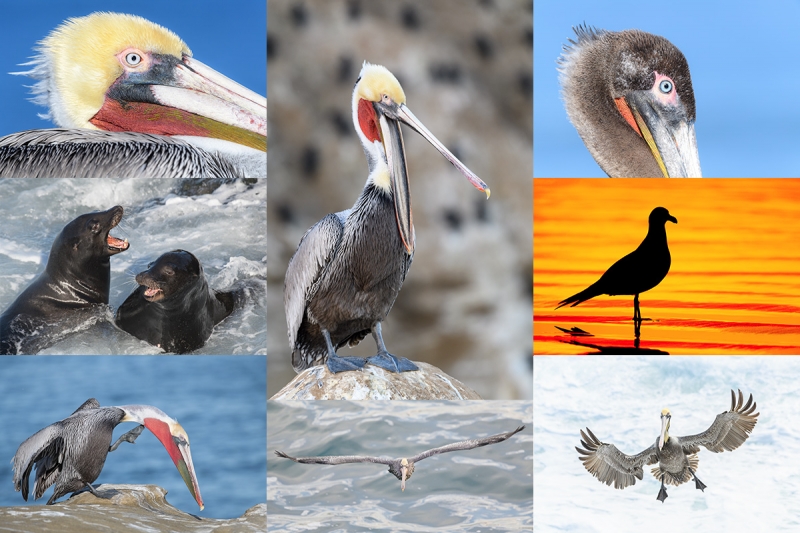














Image #1 and #2 of Wood Duck drake are both cute and interesting and well made! Good camera settings to be so close to each of them and easy to see them!
Artie
Ditto to Happy Birthday America to All!
I love both images today #1 the neck extended is cool and the little smaller in the frame and higher shot. #2 i love the low larger in the frame shot with the dreamy water and his reflection colors. They both are beautiful and i’d love to have both and if i could only have 1 it would be Image #2.
I am however wondering why you were at such high SS and iso on #1…..lol 🙂
The wood ducks here in Wisconsin nest in Cavities in trees or the thousands of nesting boxes scattered around the state on lakes and ponds. Here a woodie may lay 5-15 eggs coming back to the nest each day or every other and lay an egg and the male will stay until the female starts to sit on them and once she does he takes off not to be seen again and about 30 days later the eggs hatch and the following morning she moves them to the water and if you catch the jump from the nest box or tree it is really amazing to watch. Hooded Mergansers do the same nesting procedure here.
Always with love b
How do they taste?
with love, artie
Like Chicken 🙂
Always with love b
I was on Grimsey Island for a week two summers ago. The wind conditions and terrain made it difficult to use a 600 f4 lens. The puffins are coming fast and furious into the wind from different elevations. I found the 200-600 to be the perfect lens. Those that brought the 600 gave up and used flexible zooms. On calmer days the 600 was fine for nesting birds on cliff walls.
Thanks, Alan. For me, the 400 f/2.8 (wit or without the 1.4X TC) trumps the 200-600 because of the f/2.8 or f/4 aperture as compared to f/6.3. And there will be lots of days with rain/drizzle/clouds/low light. The 400 f/2.8 is easy for me to handhold and on windy days I can remove the lens hood to make that even easier. Also, the 70-200 with or without either TC is another option for HH flight.
with love, artie
Prefer #2. I like the colors reflected in the water in #2 rather than the shade/shadow in #1. Both are nice shots.
Tanks, Dale, and welcome to the blog.
with love, artie
Happy 4th y’all! It’s a tough choice much like whether to eat a hamburger or hot dog today…
The first image is beautiful for the colors, detail and magnificent gold color against the blue of the water. The second image has lovely color, detail, and the swirl bokeh is special. I would be happy with a plate of either one.
Thanks, Adam. Pass the duck sauce please.
with love, a
My fav is #1 … I like the lower shooting angle, more of a “duck’s eye view” than shooting down at the wood duck.
Thank you sir and welcome to the blog!
with love, a
Happy 4th of July, Artie and everyone. My clear favorite is image #1 for the lovely saturated (but natural) colors on this amazing bird. I like the composition and background and bird’s pose as well.
Albuquerque NM is a wonderful place to photograph wood ducks up close and personal.
Thanks, Dr. Fish. Are there any places other than the zoo?
with love, artie
Oh, yes. They’re often in the ponds at Tingley Beach and the Rio Grande Nature Center State Park is a great place to see them.
Are they tame and accessible in those places? I remember the RGNC being a very tough place to shoot.
thanks with love, a
Not as tame as some other places but lots of them and nice holes in the concrete wall to shoot through, so you don’t spook them. With your 600 and megapixel camera you’d do just fine; with TCs, even better.
With love,
D